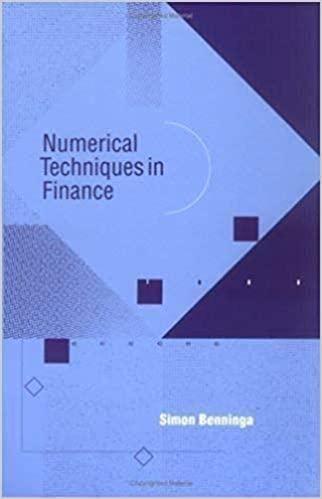Question
Let us introduce two day-count conventions: T^{A}(t,T) = 30/360. It measures the distance between dates t and T in years as expressed as 30 times
Let us introduce two day-count conventions: T^{A}(t,T) = 30/360. It measures the distance between dates t and T in years as expressed as 30 times the number of entire months comprised between the two dates, plus the actual number of residual days, all divided by 360. T^{S}(t,T) = ACTUAL/90 is the quarterly equivalent of the yearly ACTUAL/360 day-count convention. It measures the distance between dates t and T in quarters as expressed as the number of days comprised between the two dates divided by 90. At time t=1/1/2022 (=DD/MM/YYYY), we observe the following term structure of semiannually compounded spot rates of interest, each quoted per quarter (p.q.) according to T^{S}: R_{T1}(t)=3.0% p.q., R_{T2}(t)=5.0% p.q., R_{T3}(t)=4.0% p.q., where maturities are T1= 1/7/2022, T2= 1/1/2023, T3= 1/1/2024. (Remark: here, time unit = 1 quarter, day-count convention =T^{S}, compounding rule = discrete, with = 0.5 years = 2 quarters.)
a) Show that one actual quarter may be strictly greater than one quarter as defined by T^{S}. Calculate all:
b) spot LIBORs,
c) forward LIBORs, and
d) forward monthly compounded rates of interest, each quoted per annum (p.a.) according to day-count convention T^{A}.
Step by Step Solution
There are 3 Steps involved in it
Step: 1

Get Instant Access to Expert-Tailored Solutions
See step-by-step solutions with expert insights and AI powered tools for academic success
Step: 2

Step: 3

Ace Your Homework with AI
Get the answers you need in no time with our AI-driven, step-by-step assistance
Get Started


